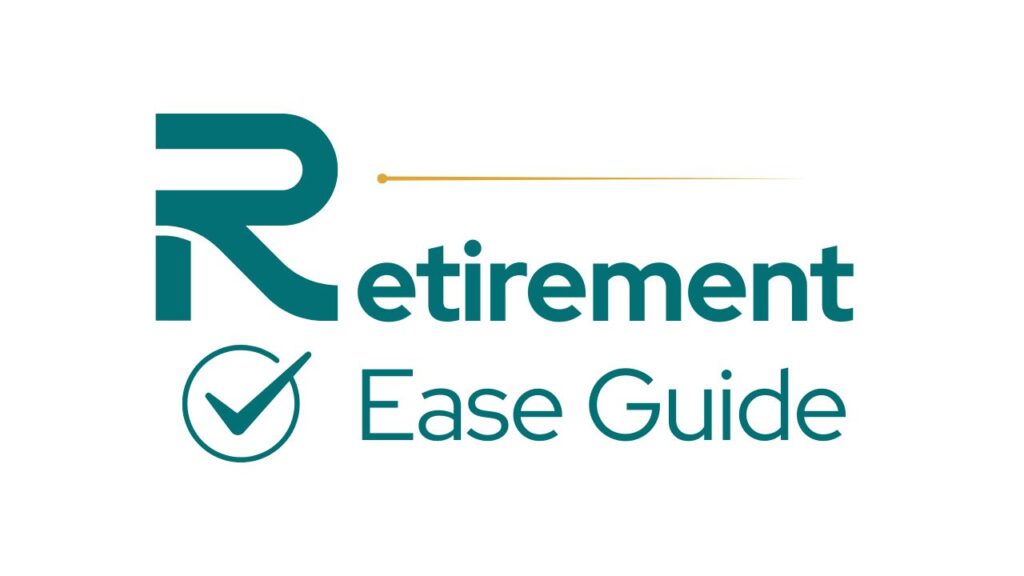I’m Living in Retirement
“Manage Wisely, Live Fully — Enjoy the Freedom You’ve Earned.”
I’m Living in Retirement — Managing Income, Taxes, and Lifestyle for a Confident Future
Already retired? Learn how to manage income, taxes, withdrawals, and healthcare costs with Retirement Ease Guide. Discover expert strategies and tools to live confidently, comfortably, and stress-free in your golden years.
Live confidently in retirement — manage income, taxes and healthcare with clarity.
Transform savings into a sustainable income stream. Learn withdrawal strategies, tax planning, healthcare navigation, and lifestyle design for a secure retirement.
Key idea: Use income layering (Social Security + pensions + withdrawals + part-time income) to create stability.
Embracing the New Chapter of Retirement
Congratulations — you’ve reached one of life’s most rewarding milestones! But retirement isn’t the end of financial planning; it’s a new phase that demands balance, insight, and adaptability.
At Retirement Ease Guide, we help retirees like you manage your money wisely, protect your health, and optimize your lifestyle so you can enjoy your golden years with peace of mind.
This stage is all about transforming decades of savings into a sustainable, stress-free income stream — without sacrificing the joy, comfort, and security you’ve worked for.

Shifting from Saving to Spending Strategically
Decumulation is about making your savings last. Flexibility, tax planning, and smart withdrawals are essential to avoid running out of money.
Creating a Sustainable Retirement Income Plan
A well-structured retirement income plan combines multiple income sources to ensure stability through market ups and downs.
At Retirement Ease Guide, we recommend creating an income layering system that blends guaranteed income with investment-based income.
Primary Sources of Retirement Income
- Social Security Benefits:
Most retirees rely on Social Security as a foundation. The longer you delay (up to age 70), the higher your monthly benefit — often by 8% per year. - Pensions:
If you’re fortunate to have one, decide between lump-sum or monthly annuity payments. Annuities provide steady, predictable income. - Personal Savings and Investments:
Withdraw funds from 401(k)s, IRAs, or brokerage accounts strategically to avoid unnecessary taxes. - Part-Time Work or Passive Income:
Many retirees enjoy consulting, freelancing, or rental income — keeping both mind and finances active.
Building a Reliable Withdrawal Strategy
A traditional approach is the 4% Rule — withdrawing 4% of your retirement portfolio annually, adjusted for inflation.
However, flexibility is key. Market fluctuations, health expenses, and personal goals may require adjustments.
Use the Retirement Ease Guide Withdrawal Planner to model different scenarios and ensure your savings outlast your lifespan.
The Role of Tax Planning in Retirement
Smart tax management can significantly extend the lifespan of your nest egg.
1. Know Your Tax Buckets
A traditional approach is the 4% Rule — withdrawing 4% of your retirement portfolio annually, adjusted for inflation.
However, flexibility is key. Market fluctuations, health expenses, and personal goals may require adjustments.
Use the Retirement Ease Guide Withdrawal Planner to model different scenarios and ensure your savings outlast your lifespan.

2. Plan Around Required Minimum Distributions (RMDs)
Once you reach age 73 (as of 2025), you must start taking RMDs from tax-deferred accounts. Failing to do so results in steep penalties.
Plan ahead by gradually converting some funds into Roth IRAs, reducing future RMDs.
3. Optimize Social Security Timing
Withdrawing too early (at 62) can reduce lifetime benefits by up to 30%. Delaying until 67 or 70 often yields significantly higher payouts — a strategic move for long-term security.
Managing Healthcare Costs and Insurance
Healthcare is one of the largest — and most unpredictable — retirement expenses. According to Fidelity, an average couple retiring in 2025 may spend over $330,000 on healthcare throughout retirement.
Choosing the Right Retirement Accounts
1. Medicare Essentials
- Medicare Part A: Covers hospital stays (usually free).
- Medicare Part B: Covers doctor visits and outpatient care (monthly premium).
- Medicare Part D: Covers prescription drugs.
Enroll on time to avoid penalties, typically three months before your 65th birthday.
2. Supplementing Medicare
Consider Medigap or Medicare Advantage Plans to cover what traditional Medicare doesn’t — like vision, dental, and long-term care.
Retirement Ease Guide provides a detailed Healthcare Planning Guide to help compare options and find the right plan.
Long-Term Care (LTC) Planning
Long-term care costs can drain retirement savings quickly. Explore:
- Long-term care insurance
- Hybrid life + LTC policies
- Health Savings Accounts (HSAs) for medical expenses (tax-free withdrawals)
For Quick Understand
Medicare Parts A/B/D
Enroll on time and understand premiums and coverage gaps.
Supplement Plans
Medigap or Advantage plans cover additional services like dental & vision.
Long-Term Care
Consider LTC policies or hybrid solutions to protect savings.
Budgeting for a Balanced Retirement Lifestyle
Retirement budgeting isn’t about restriction — it’s about aligning spending with what truly matters.
The 3-Bucket Approach
- Essential Expenses: Housing, healthcare, utilities, groceries.
- Discretionary Expenses: Travel, hobbies, gifts, dining.
- Legacy/Charity Funds: Donations or family support.
At Retirement Ease Guide, we encourage retirees to use our Cost-of-Living Comparison Tool to assess state-by-state affordability — factoring in taxes, housing, and healthcare.
Practical Tips for Maintaining Financial Balance
- Review your budget quarterly.
- Avoid lifestyle inflation during market highs.
- Use senior discounts and community benefits.
- Downsize or relocate if housing costs are burdensome.
Your retirement budget should adapt as your needs evolve — not limit your enjoyment.
Housing and Lifestyle Considerations
Where and how you live can dramatically affect both your happiness and financial security.
Exploring Retirement Communities
Retirement Ease Guide highlights top 55+ communities nationwide — from active-lifestyle neighborhoods in Florida to peaceful, affordable living in Arizona and Texas.
These communities often provide:
- Maintenance-free housing
- Social clubs and activities
- Fitness and healthcare facilities
- Transportation and security services
The Case for Downsizing
Moving from a large family home to a smaller condo or active-adult community can:
- Free up home equity
- Reduce maintenance costs
- Simplify daily living
Our experts can help you compare housing options to find what best suits your financial and emotional goals.
Staying Financially and Mentally Active
A fulfilling retirement extends beyond money. Many retirees find meaning through social engagement, lifelong learning, or volunteering.
Ideas for Staying Engaged
- Join local hobby or fitness groups.
- Volunteer for causes close to your heart.
- Explore part-time work or mentorship opportunities.
- Travel or enroll in senior education programs.
Staying active supports both mental health and financial wellness by reducing medical costs and keeping you connected to a community.
Protecting Against Market Volatility
Economic downturns can affect retirees more severely, especially when withdrawing funds from investments.
Strategies to Reduce Risk
- Keep 1–2 years of expenses in cash reserves.
- Avoid selling investments during downturns.
- Diversify across asset classes (stocks, bonds, real estate).
- Rebalance your portfolio annually to match your comfort level.
Consult with a trusted advisor through Retirement Ease Guide for personalized market-risk management.
Estate and Legacy Planning
Estate planning ensures your wealth passes smoothly and tax-efficiently to loved ones.
Key elements include:
- A valid will or revocable living trust
- Power of attorney for healthcare and finances
- Beneficiary designations on all accounts
- Estate tax minimization strategies
Our guides connect you with estate planning specialists who make this process simple, transparent, and aligned with your family’s goals.
Tools for Retirees
Our free interactive tools help you calculate income, savings targets, and compare living costs.
Withdrawal Planner
Model sustainable withdrawal rates for different market conditions.
Cost of Living Comparison
Compare state costs, taxes & healthcare to guide relocations.
Final Thoughts: Living Confidently in Retirement
Retirement isn’t about slowing down — it’s about living life on your terms.
At Retirement Ease Guide, we make that possible by simplifying every part of the journey — from managing income and taxes to healthcare, housing, and lifestyle choices.
Whether you’re seeking peace of mind or new adventures, our mission is to help you live financially secure, emotionally fulfilled, and stress-free in your golden years.
Start Here: 3 Steps for Retirees
- Layer your income sources (Social Security, pensions, savings).
- Run withdrawal & healthcare planners.
- Review taxes, estate, and insurance annually.
Get Personalized Advice
Connect with verified advisors for tailored retirement income and tax planning.

Frequently Asked Question
How much should I withdraw each year from my savings?
The 4% rule is a general guide, but flexibility is key. Use our Withdrawal Planner to customize based on market conditions and life expectancy.
Should I still invest after retiring?
Yes — conservative investments like bonds or dividend-paying stocks can help preserve capital and outpace inflation.
How do I control taxes on retirement income?
Withdraw from taxable, tax-deferred, and tax-free accounts strategically to stay in lower brackets.
What’s the best way to handle healthcare expenses?
Combine Medicare with a supplemental or Advantage plan, and maintain a separate emergency fund for out-of-pocket costs.
How do I stay socially active in retirement?
Join local clubs, volunteer, or move to an active 55+ community to maintain purpose and social connection.
Can I still work during retirement?
Absolutely. Many retirees choose part-time or flexible work to stay active — and it can also reduce withdrawal pressure on savings.
Disclaimer: © RetirementEaseGuide – This content is for informational purposes only and not intended as medical or financial advice.
